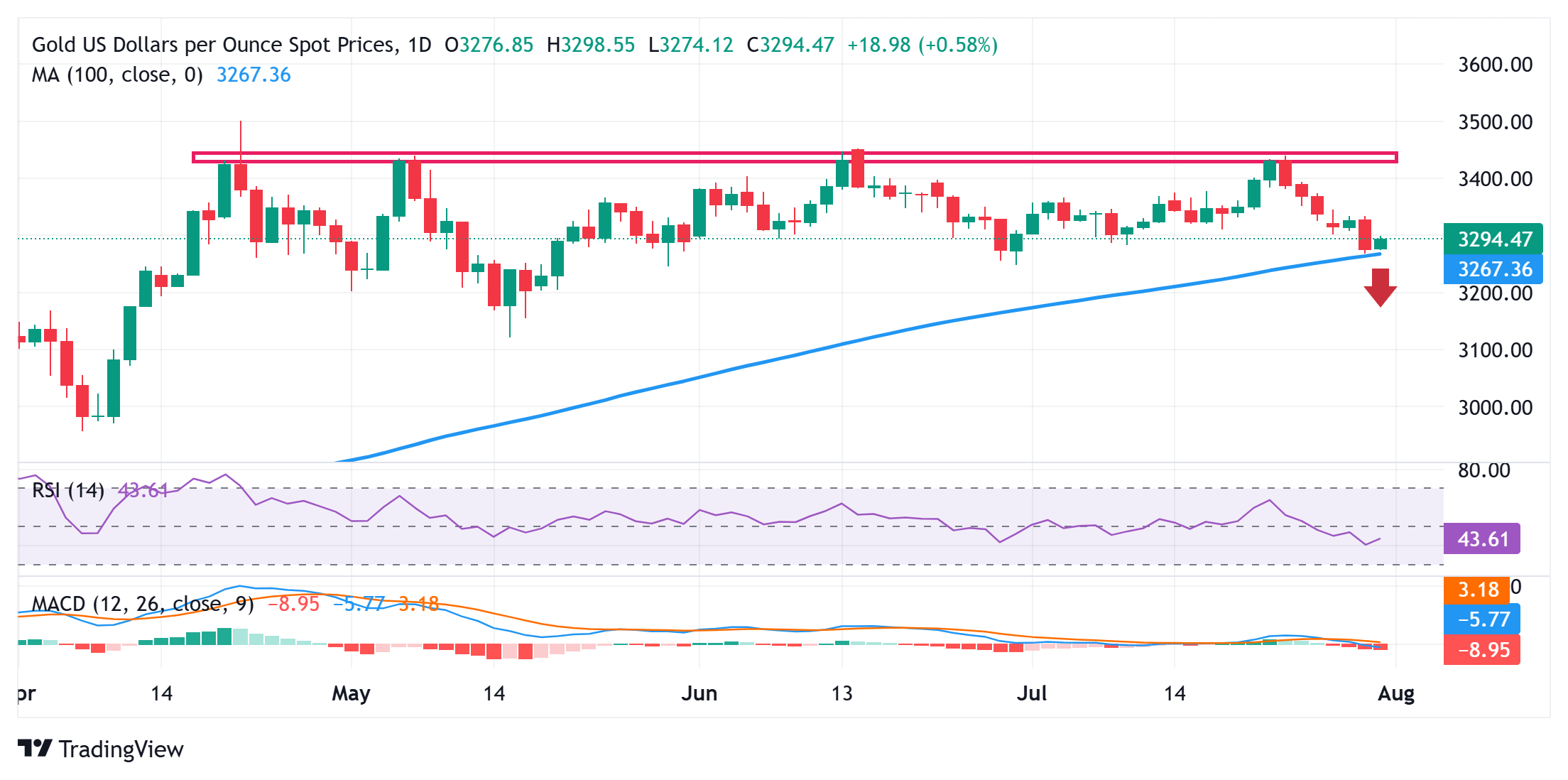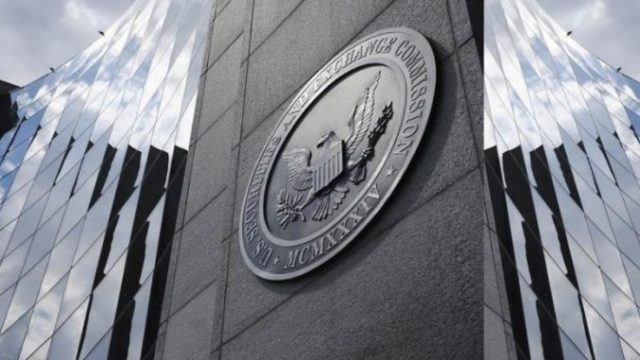- The price of gold attracts purchases in falls while the USD bulls pause after the night rebound to a maximum of two months.
- The hard line tone moderates the expectations of rate cut in September and should limit any deepest loss of the USD.
- The operators now expect the publication of the US Personal Consumption Expenditure Index (PCE) in search of a significant impulse.
The price of gold (Xau/USD) remains in its modest recovery profits during the Asian session on Thursday, although it is still below the round figure of $ 3,300. This, in turn, justifies a certain caution before positioning itself for a greater recovery from a minimum of one month established in reaction to the hard line of the Federal Reserve (Fed) on Wednesday. In fact, the president of the FED, Jerome Powell, showed no preference to cut rates at the next September meeting, which, in turn, weighed strongly on the non -generating yellow metal.
Meanwhile, the US dollar (USD) relaxes from a maximum of two months as the bulls become cautious before the publication of the US Expenditure Price Index (PCE) of the USA. This, in turn, is considered a key factor that helps the price of gold to bouncing from the simple mobile average (SMA) of 100 days. However, the fundamental background justifies caution before confirming that the Xau/USD torque has formed a short -term fund and position itself for any significant upward movement.
What moves the market today: the price of gold is maintained in positive bias while the USD pauses the post-fomc rally
- The US Federal Reserve maintained its reference interest rate without changes at the fifth consecutive meeting, in a range of 4.25% to 4.5%, despite the intense pressure of the US president, Donald Trump, and his allies to reduce indebted costs. However, the decision found opposition from the governors of the FED, Michelle Bowman and Christopher Waller. This was the first time since 1993 that two governors dismit to a rate decision.
- In the Deputy Monetary Policy Declaration, the Committee had a more optimistic vision and pointed out that the economy continued to expand at a solid pace. In addition, the Fed president, Jerome Powell, said during the press conference after the meeting that the Central Bank had not made decisions about whether to cut rates in September. This adds to the optimistic macroeconomic data of the US and raised the US dollar to a maximum of two months.
- Automatic Data Processing reported that private payrolls in the US increased by 104,000 jobs in July, after a revised 23,000 drop recorded in the previous month. In addition, the preliminary report of the US gross domestic product (GDP) published by the US Department of Commerce showed that the economy expanded at an annualized pace of 3.0% during the second quarter after contracting 0.5% in the previous quarter.
- The operators now wait for the Fed’s favorite inflation indicator – the underlying PCE Price Index – in search of a new impulse. Meanwhile, the USD bulls seem reluctant to make aggressive bets, which helps the price of gold to attract some buyers during the Asian session on Thursday. However, the fundamental background makes a strong follow -up purchase prudent before confirming that the Xau/USD torque has touched the background.
The price of gold needs to exceed the immediate barrier of 3,309-3.310 to support the case of additional profits

From a technical perspective, the raw material finds some support before the simple mobile average (SMA) of 100 days and, for now, seems to have stopped the fall after FOMC. However, the oscillators in the daily chart have begun to gain negative traction, suggesting that any subsequent fortress beyond the $ 3,300 mark is more likely to be sold and remained limited near the area of $ 3,310. A sustained movement above the latter, however, could trigger a short of short coverage and raise the price of gold towards the next relevant obstacle near the horizontal zone of $ 3,325-3,326.
On the other hand, the area of $ 3,275-3,270 (close to the 100-day SMA) could continue to protect the immediate fall, below which the price of gold could re-test the monthly minimum of June, around the region of $ 3,248-3,247. The latter should act as a key point, which, if it breaks decisively, will be seen as a new trigger for the bassists of the Xau/USD and will open the way for a fall to the round figure of $ 3,200.
Fed – Frequently Questions
The monetary policy of the United States is directed by the Federal Reserve (FED). The Fed has two mandates: to achieve prices stability and promote full employment. Its main tool to achieve these objectives is to adjust interest rates. When prices rise too quickly and inflation exceeds the objective of 2% set by the Federal Reserve, it rises interest rates, increasing the costs of loans throughout the economy. This translates into a strengthening of the US dollar (USD), since it makes the United States a more attractive place for international investors to place their money. When inflation falls below 2% or the unemployment rate is too high, the Federal Reserve can lower interest rates to foster indebtedness, which weighs on the green ticket.
The Federal Reserve (FED) celebrates eight meetings per year, in which the Federal Open Market Committee (FOMC) evaluates the economic situation and makes monetary policy decisions. The FOMC is made up of twelve officials of the Federal Reserve: the seven members of the Council of Governors, the president of the Bank of the Federal Reserve of New York and four of the eleven presidents of the regional banks of the Reserve, who exercise their positions for a year in a rotary form.
In extreme situations, the Federal Reserve can resort to a policy called Quantitative Easing (QE). The QE is the process by which the Fed substantially increases the flow of credit in a stuck financial system. It is a non -standard policy measure used during crises or when inflation is extremely low. It was the weapon chosen by the Fed during the great financial crisis of 2008. It is that the Fed prints more dollars and uses them to buy high quality bonds of financial institutions. The one usually weakens the US dollar.
The quantitative hardening (QT) is the inverse process to the QE, for which the Federal Reserve stops buying bonds from financial institutions and does not reinvote the capital of the bonds that it has in portfolio that they expire, to buy new bonds. It is usually positive for the value of the US dollar.
Source: Fx Street
I am Joshua Winder, a senior-level journalist and editor at World Stock Market. I specialize in covering news related to the stock market and economic trends. With more than 8 years of experience in this field, I have become an expert in financial reporting.







